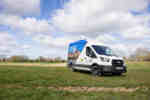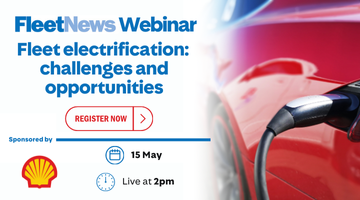Although online driver risk assessments and training modules, and to a lesser extent black-box technology, can play an important part in getting business drivers to improve the way they manage risk on the road, there is no substitute for interacting with an experienced, highly qualified defensive driving instructor.
Over the 20 plus years that AA DriveTech has been at the forefront of business driver training and development, the instructors that have run practical in-vehicle courses, and group workshops, have had many opportunities to hear first-hand the many mistaken beliefs that help shape drivers’ behaviour.
Despite so much information being available in the media, one of the most common of all fleet driver misconceptions is that ABS shortens the stopping distance when brakes are applied hard in an emergency.
Sadly it doesn’t always - there are too many driver-related, tyre, road surface and weather variables - but what it does do brilliantly, if you are aware of it and trained to make the most of it, is enable the driver to brake severely and steer at the same time to avoid a collision.
It’s not the drivers’ fault they don’t know about this.
There’s no provision within the learner driver system to experience the effects of ABS and when we buy a car, no salesman is going to risk doing a full-blooded emergency stop just to show how well his brand of car performs.
On a similar topic, most drivers believe that tyre tread is there to improve grip but drivers keen on motor racing know that a completely treadless tyre - a ‘slick’ - will give far greater grip in dry conditions than a treaded tyre.
Of course, the tyre tread is merely
there to disperse water increasing grip
in wet conditions.
When most drivers are asked why road signs are put up, the majority will respond that they are there to give information to drivers.
That’s true to a certain extent... but the real reason is that they are often put up
in response to road incidents that have happened at that particular spot.
Local authorities are strapped for cash like never before and they would not spend money on additional signage unless lives are at stake, so it’s just as well to react to the signs and drive accordingly.
Finally, there has been a huge amount of coverage in the media about the use of mobile phones while driving but many fleet drivers erroneously believe that a legal hands-free kit minimises the risk of making that call when on the move.
The reality is that, even when using the mobile ‘legally’, reaction times to deal with an emergency manoeuvre effectively will increase by at least 20%, which equates to 12 metres at just 30 mph.
Also, many business drivers also don’t realise that, in the event of being involved in a serious collision while on the phone, both the driver and the employer could be prosecuted.
That’s why employers should always continuously challenge their driver’s beliefs to improve safety for all.


















James Quinn - 02/11/2012 12:02
Good article, but regarding the section on stopping distances and mobile phone use, the principle is completely correct,but the arithmetic does not make sense. At 30mph the thinking distance, or reaction time, according to the highway code is 9 metres, 20% of 9 metres is 1.8 metres, not 12 metres as stated in the article. The slower reaction time would only affect the 'thinking distance' not normally the overall braking distance, unless the distraction also causes the hazard to be incorrectly assessed.